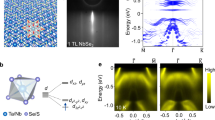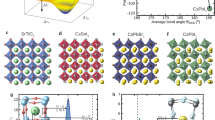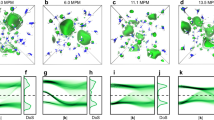Abstract
IN a previous letter1, I showed that a thin layer of antimony produced by distillation in a high vacuum is amorphous. This conclusion was drawn from the fact that the electron diffraction pattern consisted of broad bands always showing exactly the same appearance (width, intensity, etc.) this could scarcely be understood if the state were only colloidal. The following researches corroborate and extend this view:
This is a preview of subscription content, access via your institution
Access options
Subscribe to this journal
Receive 51 print issues and online access
$199.00 per year
only $3.90 per issue
Buy this article
- Purchase on SpringerLink
- Instant access to full article PDF
Prices may be subject to local taxes which are calculated during checkout
Similar content being viewed by others
References
NATURE, 131, 760; 1933.
I took photographs with copper K-radiation ; see also II. Kersten, Physics. 2, 276; 1932.
Included impurities may exert an analocous effect in sputtered layers, described by H. Zahn and J. Kramer, Z. Phys., 88, 413; 1933.
H.v. Steinwehr and A. Bchulze, Z. Phys., 63, 815; 1930.
Z. phys. Chem., 52, 129; 1905.
G. Tammann und W. Müler, Z. anorg. u. allg. Chem., 221, 109; 1934.
Author information
Authors and Affiliations
Rights and permissions
About this article
Cite this article
CAMPBELL, W. Amorphous Antimony. Nature 136, 299 (1935). https://doi.org/10.1038/136299b0
Published:
Issue date:
DOI: https://doi.org/10.1038/136299b0



